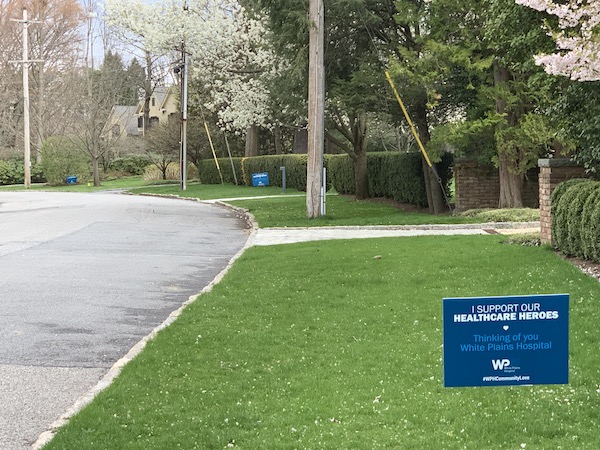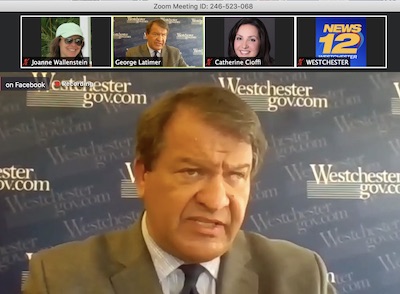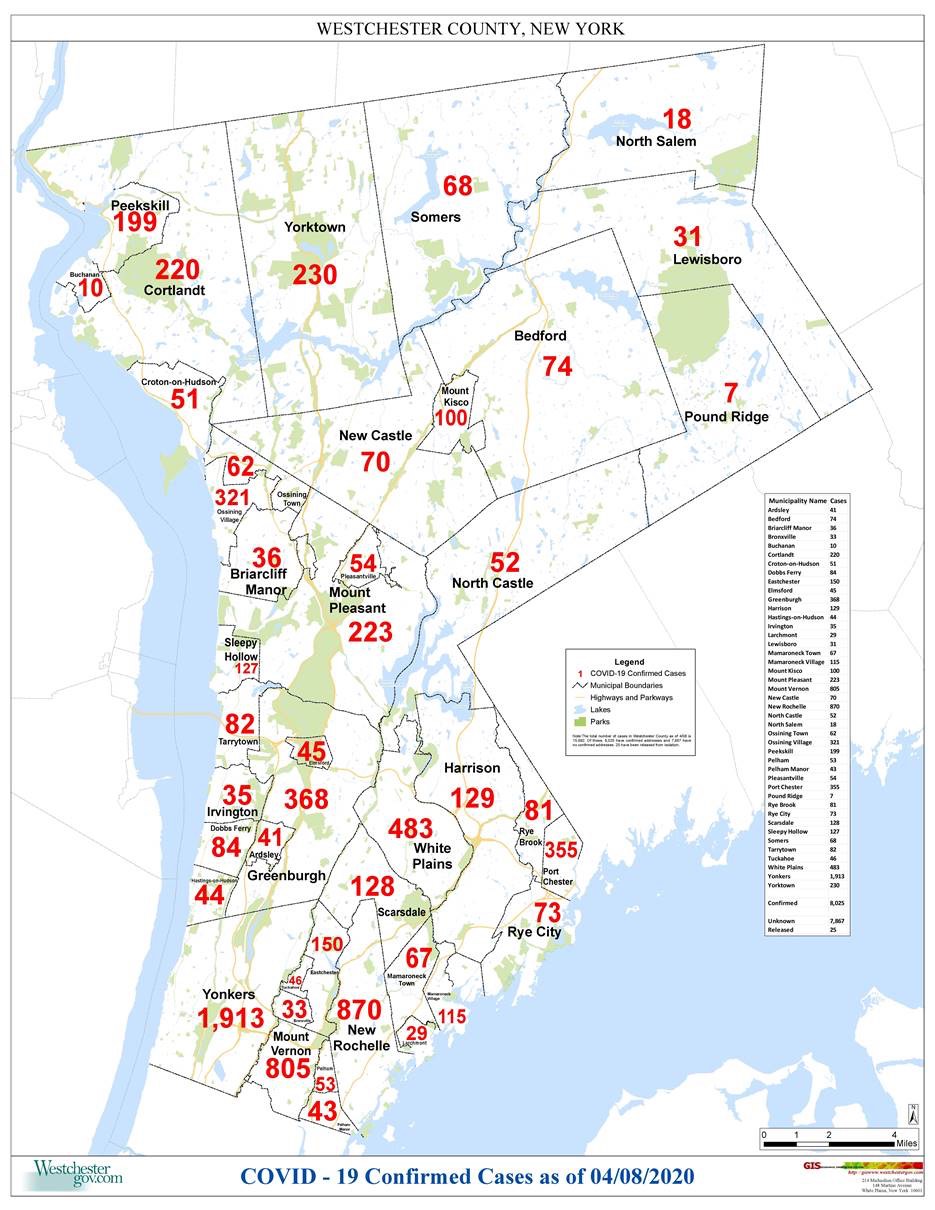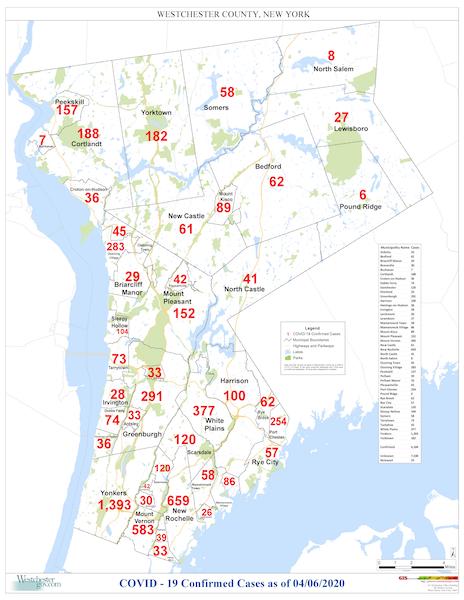JLCW Contributes to the White Plains Hospital COVID-19 Relief Fund
- Details
- Written by: Joanne Wallenstein
- Category: Health
 For 73 years the women of the Junior League of Central Westchester (JLCW) have worked to positively impact the lives of women and children within our community. The current COVID-19 crisis has impacted our community in a more devastating way than anything we've ever seen as well as challenged every response and support system geared towards aiding those impacted.
For 73 years the women of the Junior League of Central Westchester (JLCW) have worked to positively impact the lives of women and children within our community. The current COVID-19 crisis has impacted our community in a more devastating way than anything we've ever seen as well as challenged every response and support system geared towards aiding those impacted.
The JLCW has made a $2,500 donation to White Plains Hospital COVID-19 Relief Fund, which is the equivalent to a day’s worth of surgical masks for first responders. White Plains Hospital has been a longtime partner and sponsor of the JLCW, having collaborated together on several community projects over the years. White Plains Hospital has been there for the JLCW, and we are there for them now.
The White Plains Hospital COVID-19 Relief Fund is being used to purchase Personal Protective Equipment (PPE) and supplies, to build additional critical care units, and to provide meals to front line staff. The fund will also be used for advanced technology to care for COVID patients such as additional monitors and iPads for patients to use in communicating with family members.
“Members of The Junior League of Central Westchester have come together to make a donation equivalent to the funds required for a day’s worth of surgical masks,” said JLCW President Valerie Phillips. “Our League has partnered with White Plains Hospital for many years and we are grateful to be able to support their critical efforts in our community during this extraordinary time.”
Buy A Sign to Show Your Support for Healthcare Heroes
- Details
- Written by: Joanne Wallenstein
- Category: Health
 The Friends of White Plains Hospital applaud the tireless efforts of healthcare heroes. The nurses, doctors, and countless other essential workers all fighting on the front line to keep our community safe. They ask you to show your support today by purchasing a lawn sign in support of our healthcare heroes.
The Friends of White Plains Hospital applaud the tireless efforts of healthcare heroes. The nurses, doctors, and countless other essential workers all fighting on the front line to keep our community safe. They ask you to show your support today by purchasing a lawn sign in support of our healthcare heroes.
Click here to get yours today and support local healthcare:
128 Test Positive in Scarsdale; Latimer Gives Westchester County Update
- Details
- Written by: Joanne Wallenstein
- Category: Health
 Westchester County Executive George Latimer Provides Daily Press Briefings on Zoom
Westchester County Executive George Latimer Provides Daily Press Briefings on Zoom
We listened in on a press conference with Westchester County Executive George Latimer on Tuesday April 7.
At the time, he believed that the contagion and death seemed to be slowing though it is too early to tell.
As of Tuesday April 7, 14,804 had tested positive for Covid 19 in Westchester County – out of 46,701 tested. He called these numbers “comparable to other suburban counties.”
Also as of Tuesday, 283 Westchester residents had died, a fatality rate of 1.9%. According to Latimer, 80% of those diagnosed are able to overcome the virus.
About hospital beds, Latimer said that there were currently 1,056 people in the hospital, which the county could manage. If this rate climbs, more beds will be needed. The Westchester County Center will be online one week from Friday and will have another 100 beds. Volunteers to staff that facility. The county has already heard from 126 nurses and 17 doctors who volunteered to help.
Flags at Half Mast:
Latimer reported that flags throughout the County have been lowered to half mast and will remain at half-mast for the length of the crisis.
Small Business Applications As of April 8, 128 Tested Positive in Scarsdale.
As of April 8, 128 Tested Positive in Scarsdale.
The county is also looking for volunteers to help small businesses apply for the federal loan funds that are available. Latimer said, it is “not easy to file the paperwork and that may be an obstacle to getting the money. Trained volunteers could help.
Parks
Westchester County Parks are open for the remaining winter season, including the golf courses. He believes these are safe because people practice social distancing however, Rockland County has closed their parks. Latimer said of now, the county was not planning to open Rye Playland, the county beaches or pools as these would have “active uses” and not be safe. He also said that the ethnic festivals at the Kensico Dam would not be scheduled as they would be “unmanageable.”
He ended by saying, “We will never forget the spring of 2020 – let’s hope we’re all here in the spring of 2021 to enjoy it.”
Two Deaths Reported in Scarsdale: County Provides Corona Update
- Details
- Written by: Joanne Wallenstein
- Category: Health
 The map above was provided by County Executive George Latimer.Two deaths were reported in Scarsdale last week. Due to patient privacy laws, the cause of death was not provided for either case.
The map above was provided by County Executive George Latimer.Two deaths were reported in Scarsdale last week. Due to patient privacy laws, the cause of death was not provided for either case.
On April 1 at 4:04 in the afternoon, an 87 year-old woman died at the Ambassador on Saxon Woods Road in Scarsdale.
On April 4 at 7:47 in the morning an 82 year-old resident of Overlook Road advised that her 93 year-old husband had passed away. No further details were provided and there were “no signs of criminality.”
On Monday April 6, County Executive George Latimer released the following data about Coronavirus in Westchester County:
-Total number hospitalized (cumulative) 718
-Total currently in hospital 377
-Number hospitalized in Westchester County 345
-Number of deaths (updated last April 4 by New York State) 211
Show Your Gratitude by Sharing Drawings and Messages with Emergency Workers
- Details
- Written by: Joanne Wallenstein
- Category: Health

The hospital has been flooded with an outpouring of community support—whether it’s donated food, supplies, or heartfelt tributes. More people are reaching out every day to ask “How can I help?”
Here's a community outreach opportunity that’s available to everyone and would mean so much at this time.
A messaging frame is available to all via download here. People can use it to write a message, draw a picture or get creative to celebrate these essential frontline workers. These messages can be shared on social media with #WPHCommunityLove, and emailed to: [email protected] or mailed to: White Plains Hospital Community Love, 101 East Post Road, White Plains, NY 10601.
All messages will be on display at the Hospital for all frontline workers to read during shift changes and breaks. In addition, those wishing to make a donation to the Hospital during this critical time can do so here: https://www.wphospital.org/covid19help













